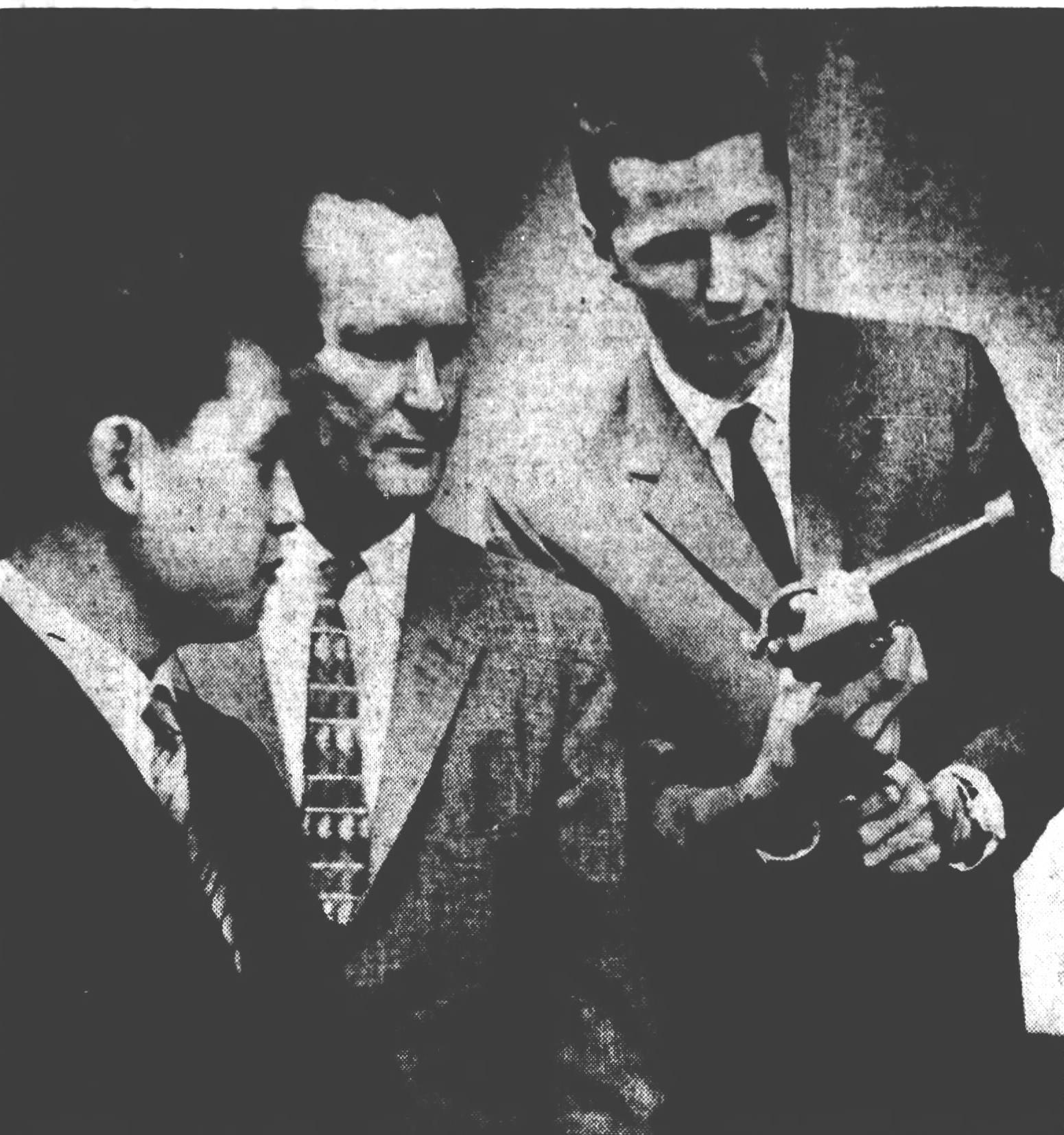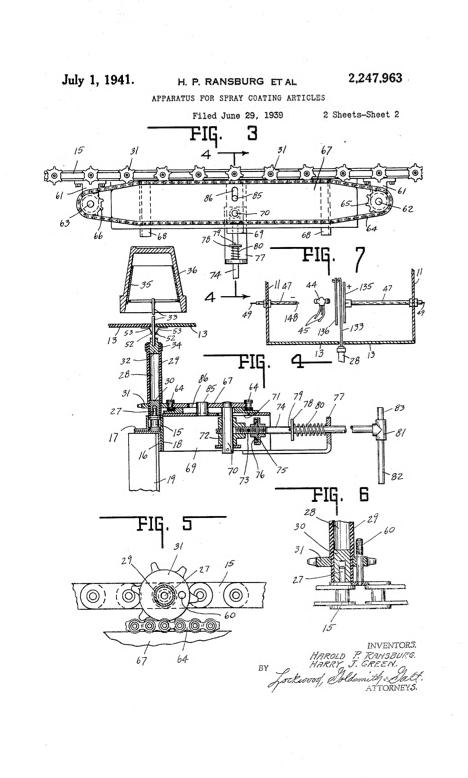In 1938, Harold Ransburg and Harry Green began experiments in Indianapolis attempting to conserve paint, in short supply during the Great Depression, by reducing wasted overspray through an electrical process (electrostatic spray finishing). Assisted by Emery P. Miller, a physics professor from Purdue University, Ransburg and Green refined their process and were granted a patent on July 1, 1941.

Financed and owned by Harold’s father, Harper Ransburg, the young company began manufacturing painting machinery. During World War II, the U.S. War Department contracted with the Ransburg Company for the production of special machinery for painting ammunition and weapons. Wartime profits financed the development of more efficient painting methods.
In 1957, the company built an 80,000-square-foot facility on West 56th Street. Increased manufacturing capacity enabled Ransburg to virtually monopolize the spray-painting market with its patented processes. In 1962, ownership transferred to Harold Ransburg and the company began to diversify. Ransburg Japan Ltd. was formed in 1963.

From the 1960s through the 1980s, the Indianapolis-based company diversified its operations adding Ransburg Canada Ltd. (Canada), Ransburg Gmbh (Germany), Ransburg S.A. (France), Ransburg Systems, Glas-Craft, Electro Painters, Mako Marine, Micro-Poise, Rol-Lift, Roto-Finish, Welltronic, Cybotech, Globe Tool & Engineering, GEMA, Industra Products, Statomat-Globe Maschinenfabrik Gmbh, and Acro Automations.
The recession of the 1980s thwarted the growth of Ransburg’s many divisions, and the company’s financial performance declined. A first-time loss of $5 million in 1984 deepened to a $16 million loss by 1987. To reduce financial losses, several divisions were sold. By this time, Ransburg had 325 employees in Indianapolis and a total of 1,550 employees worldwide. On April 1, 1989, Ransburg’s operations were purchased by Illinois Tool Works (ITW), headquartered in Glenview, Illinois.
In 2012, Graco Inc. acquired ITW, and in 2014 it sold the Ransburg Finishing division, which also included Binks and DeVilbiss, to Carlisle Companies. Carlisle held these companies separately and created Carlisle Fluid Technologies to continue these brands. Carlisle Fluid Technologies is headquartered in Scottsdale, Arizona, and has no Indianapolis presence.

Help improve this entry
Contribute information, offer corrections, suggest images.
You can also recommend new entries related to this topic.




